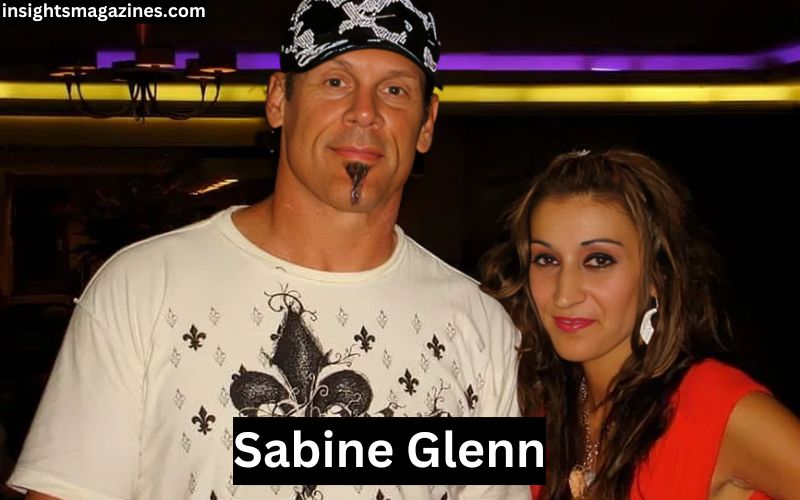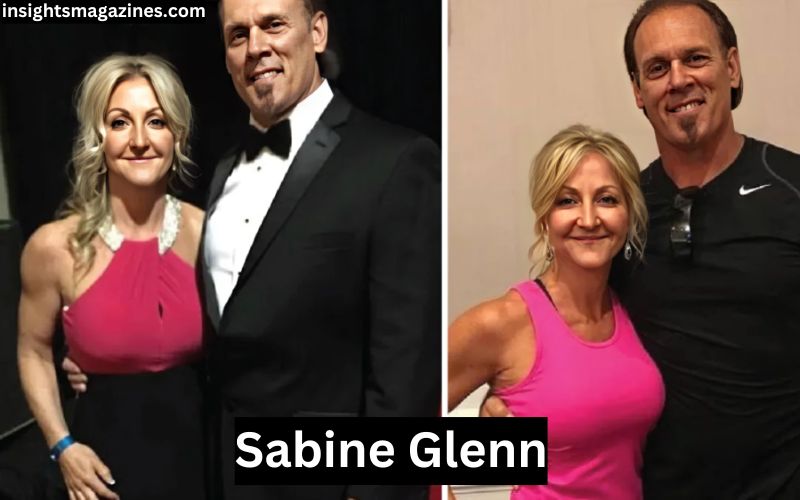Sabine Glenn is a rising figure whose influence is steadily growing in the fields of art, social justice, and advocacy. While many may recognize her for her contributions to activism, her reach goes beyond traditional forms of advocacy. As an artist, educator, and changemaker, Sabine is celebrated for the way she combines creativity with a profound understanding of societal issues.
In this article, we will explore Sabine Glenn’s early life, her journey into social justice, her achievements in the world of art, and the lasting legacy she is creating. We’ll also delve into her personal life, offering a glimpse of the person behind the public figure. By understanding Sabine Glenn, we can gain insight into how one individual can influence change across different fields.
Early Life and Background
Sabine Glenn’s Early Childhood and Upbringing
Sabine Glenn was born into a close-knit family in the early 1980s in a small suburban town in the United States. Her upbringing was instrumental in shaping her worldview, as she was surrounded by a strong support system of educators and socially conscious individuals. From a young age, Sabine’s parents, both teachers, encouraged her to explore her interests in reading, writing, and creative expression. This early exposure to education and critical thinking would set the foundation for her later work in activism and art.
Her small-town environment, while nurturing, also presented its challenges. Sabine often faced societal constraints that limited opportunities for women and minorities. However, instead of being discouraged, she used these experiences to fuel her passion for change. Observing how certain groups were treated unfairly in her community, Sabine became interested in issues surrounding social justice from a young age.
Academic Pursuits and Higher Education
Education played a crucial role in Sabine’s development. Her curiosity and commitment to learning earned her top marks in school, and she was known among peers and teachers for her strong sense of empathy and justice. Throughout her primary and secondary education, Sabine immersed herself in subjects like history, sociology, and the arts, which allowed her to better understand social dynamics and inequality.
After excelling in high school, Sabine earned a scholarship to a prestigious university, where she pursued dual degrees in sociology and fine arts. Her academic background gave her the analytical tools to dissect social issues and the creative abilities to communicate her ideas effectively. Her thesis focused on the intersectionality of race, gender, and class in modern societies, a subject that would define much of her future work.
During her time in university, Sabine became heavily involved in student organizations focused on human rights, diversity, and equity. She participated in various protests and advocacy campaigns, laying the groundwork for the activist career she would eventually pursue. These formative years sharpened her leadership skills and allowed her to connect with like-minded individuals who shared her vision for a more just and inclusive world.
Discovering Art as a Form of Expression
Although her academic journey leaned heavily toward sociology, Sabine’s passion for art became increasingly significant during her university years. She discovered that art could be used as a vehicle to express complex social and political issues. Influenced by iconic figures like Frida Kahlo, Ai Weiwei, and Jean-Michel Basquiat, Sabine began creating pieces that addressed issues of inequality, identity, and systemic oppression.
Through her art, Sabine sought to challenge the status quo and provoke conversations about uncomfortable truths. Her early works were raw, emotional, and unapologetically political, making waves in both academic and artistic circles. By the time she graduated, Sabine had already held several local exhibitions that explored the themes of race, gender, and social justice.
Career Highlights
The Early Days of Sabine Glenn’s Career
Upon completing her education, Sabine Glenn wasted no time in launching her career, combining both her sociological insights and artistic talents. Her first professional endeavor was with a global non-profit organization dedicated to women’s rights. As a project manager and creative consultant, Sabine helped design campaigns that raised awareness about issues such as gender-based violence, reproductive rights, and access to education for women in underserved communities.
Sabine’s contributions to the organization were pivotal in expanding its reach and influence. Her innovative approach to blending art and activism attracted a new audience, and her passion for the cause inspired others to join the movement. Within just a few years, Sabine had become a key player in the organization, helping to spearhead several successful initiatives that brought tangible improvements to women’s lives across the globe.

Artistic Breakthrough and Recognition
While her work in non-profit organizations was crucial, Sabine’s artistic career also gained momentum during this period. Her early exhibitions, though modest in scale, began to draw attention for their powerful commentary on social justice issues. Sabine used various mediums, including painting, sculpture, and digital art, to highlight themes such as racial discrimination, poverty, and environmental degradation.
One of Sabine’s most notable early works was a series of paintings titled The Forgotten Voices, which depicted the stories of marginalized individuals who had been silenced by society. The series was widely praised for its emotional depth and its ability to humanize abstract social issues. As her reputation as an artist grew, Sabine began receiving invitations to showcase her work in prominent galleries both in the U.S. and abroad.
Her breakthrough moment came when one of her pieces was featured in a major contemporary art exhibition in New York City. The piece, titled Unseen, was a mixed-media installation that explored the ways in which marginalized groups are often invisible in mainstream society. The installation was a critical success and earned Sabine a nomination for several prestigious art awards.
Sabine Glenn’s Impact on Social Justice
While her artistic career was taking off, Sabine never lost sight of her commitment to social justice. In fact, her success in the art world only amplified her platform and allowed her to raise awareness about the causes she cared about most. Sabine used her growing influence to advocate for policies that promoted equality, justice, and human rights.
One of her most significant accomplishments in this arena was her work with grassroots organizations that focused on prison reform. Sabine became deeply involved in efforts to address the disproportionate incarceration rates of people of color in the United States. She helped launch a campaign called Art Behind Bars, which brought art programs to prisons as a way to rehabilitate inmates and give them a platform to tell their stories.
Sabine’s work in prison reform earned her national recognition, and she became a sought-after speaker at conferences and forums on criminal justice. She argued that the prison system needed to be restructured to prioritize rehabilitation over punishment, and she used her own experiences working with inmates to illustrate the transformative power of art.
In addition to her work on prison reform, Sabine was also a vocal advocate for LGBTQ+ rights, environmental sustainability, and educational equity. She collaborated with other activists and thought leaders to push for systemic change in these areas, using her art and public speaking to challenge conventional narratives and inspire action.
Art Meets Activism: Sabine’s Unique Approach
What sets Sabine Glenn apart from other activists is her unique ability to combine art with activism. Unlike many traditional forms of advocacy, which rely on protests, petitions, and lobbying, Sabine uses creative expression to convey her messages. She believes that art has the power to evoke emotion and create empathy in ways that other mediums cannot.
One of Sabine’s most famous pieces, Voices Unheard, is a digital installation that features audio recordings of individuals from marginalized communities sharing their personal stories. The installation is designed to immerse viewers in the lived experiences of others, encouraging them to reflect on their own biases and preconceived notions. This innovative approach has resonated with audiences across the globe and has been credited with sparking meaningful conversations about race, gender, and inequality.
Sabine’s approach to activism has been described as both bold and compassionate. She is unafraid to tackle controversial subjects, but she does so in a way that invites dialogue rather than division. This has earned her respect from both her peers and the public, solidifying her reputation as a leader in the fight for social justice.
Personal Life and Interests
Family and Personal Relationships
While Sabine Glenn’s professional achievements are well-documented, her personal life remains relatively private. However, those close to her describe Sabine as a warm, compassionate, and down-to-earth individual. Despite her demanding career, she makes it a priority to maintain close relationships with her family and friends.
Sabine is married to her long-time partner, who shares her passion for social justice. The couple has two children, both of whom are actively involved in community service projects. Sabine often speaks about the importance of raising her children to be socially conscious and empathetic individuals.
In interviews, Sabine has credited her family with keeping her grounded and providing her with the emotional support she needs to continue her work. She also emphasizes the importance of self-care and balance, noting that burnout is a common challenge for activists.
Personal Passions and Hobbies
When she’s not working, Sabine enjoys spending time outdoors and engaging in creative hobbies. She is an avid hiker and often finds solace in nature, using her time in the wilderness to reflect and recharge. Sabine is also passionate about cooking and has a particular fondness for plant-based cuisine. She enjoys hosting dinners for friends and family, where she can share her love of food and conversation.
Additionally, Sabine is an advocate for mental health awareness and frequently participates in mindfulness practices such as meditation and yoga. She believes that maintaining mental and emotional well-being is essential for sustaining long-term activism and encourages others in her field to prioritize self-care.
The Lasting Legacy of Sabine Glenn
A Role Model for Future Generations
As Sabine Glenn continues to make her mark on the world, her influence is already being felt by the next generation of artists and activists. Her work serves as a reminder that art and activism are not mutually exclusive, but rather two sides of the same coin. By combining creativity with a deep understanding of social issues, Sabine has demonstrated that it is possible to inspire change through unconventional means.
Her legacy will undoubtedly be one of courage, compassion, and innovation. Sabine Glenn has not only used her talents to shine a light on injustice but has also empowered others to do the same. Whether through her art, her advocacy, or her public speaking, Sabine has created a lasting impact that will continue to resonate for years to come.
See Also: insightsmagazines.com
Conclusion
Sabine Glenn’s journey is a remarkable example of how passion, creativity, and a deep sense of justice can intersect to create meaningful change. From her early days growing up in a small town to becoming a respected artist and advocate, Sabine has consistently used her platform to challenge societal norms and inspire conversations about critical issues. Whether through her art or her activism, she has dedicated her life to amplifying marginalized voices and fighting for equality.
Sabine’s unique ability to merge art with social justice sets her apart as a leader in both fields. Her work is a reminder that art can be a powerful tool for change, capable of evoking empathy and sparking dialogue. As she continues to push boundaries and break down barriers, Sabine Glenn’s influence will undoubtedly shape the future of activism and inspire the next generation to use their talents for the greater good.
Her legacy is one of compassion, creativity, and unwavering dedication to making the world a more just and equitable place. Sabine Glenn is not just an artist or an activist—she is a force for change, proving that one person’s vision and commitment can impact the world in profound ways.

